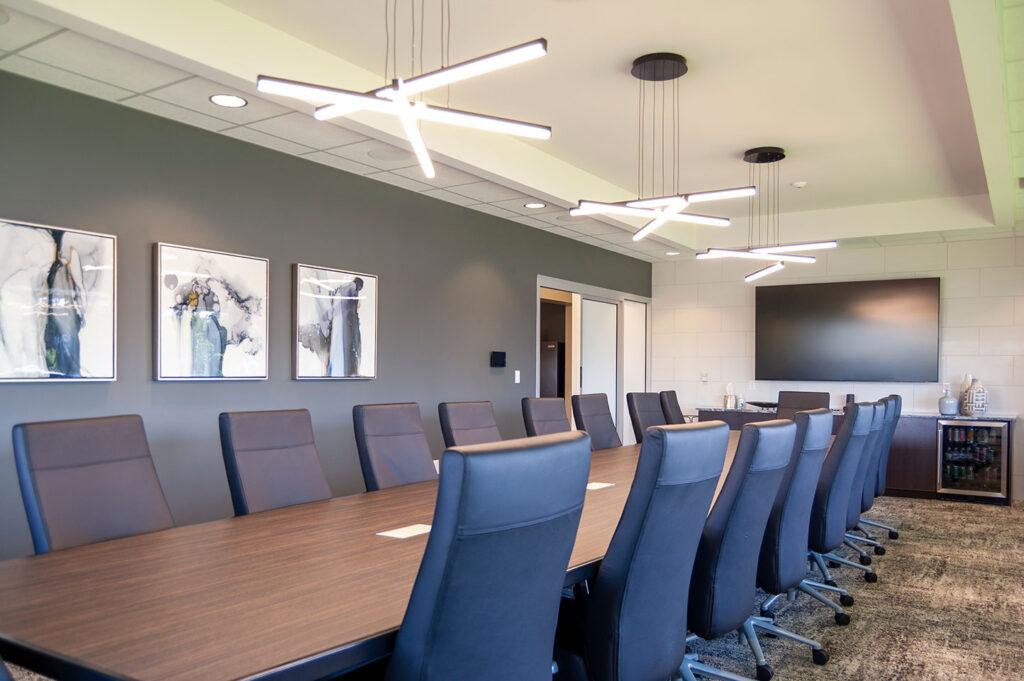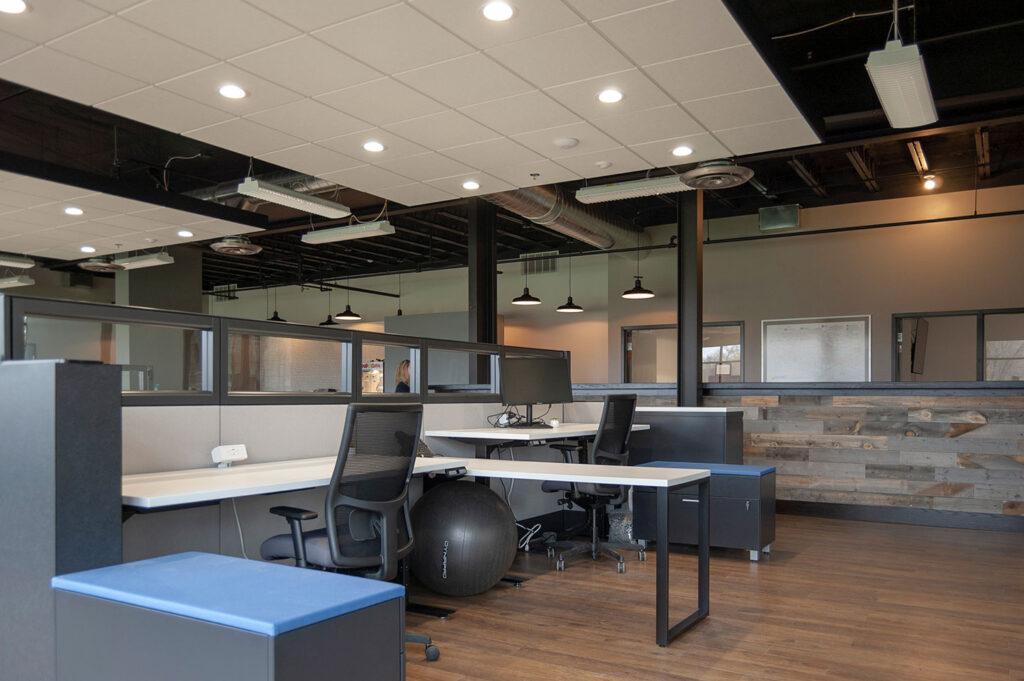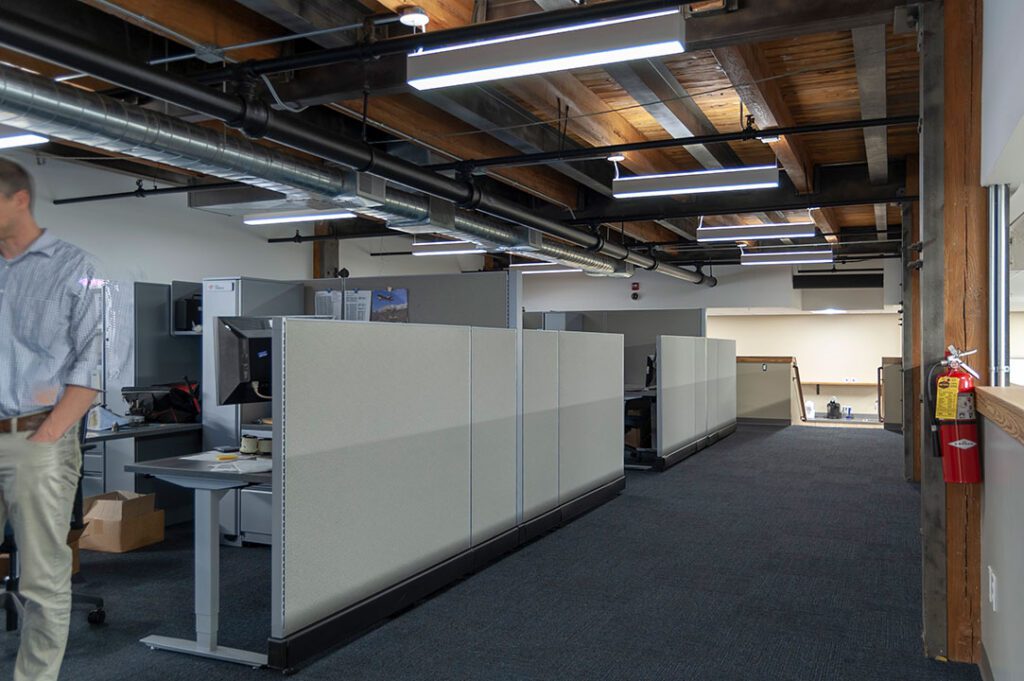
So many things support a healthy culture at work. It is about the variety of types of spaces offered to employees, the acceptance of broad diversity in staff perspectives and skills, as well as management’s desire to build a community that makes an office culture-rich and productive. One component in making all that work is the lighting.
Office lighting levels and colors determine how we see and feel the office environment.
While lighting engineers are striving for an overall “well lit, bright” and “evenly lit” environment, it may be that creating different lighting levels within the corporate office provides some relief or at least some options for the office worker. There is a lighting design theory prevalent now that says when light levels change within an environment, workers note the change and it reduces comfort. We at r.o.i. Design wonder if changes in office light levels create an opportunity for more comfort, not less.
We are conditioned by light in nature. Our relationship with the sun makes us aware of how the light feels different in the spring than in the fall. We walk through the woods and experience direct and bright light in clearings, indirect and dappled light in the forest, and the reflective light while by water.
So how do you bring natural lighting design to your office?
Consider indirect lighting.
Most light we experience is reflected off of other things. Today there are a variety of fixtures that push light to ceilings, and walls that redirect light into the environment. At least 50% of office light needs to use this technique.
Consider changeable lighting.
Giving office dwellers the ability to dim lighting is crucial. Projections and computer screens require less ambient light. And it has been proven that at 3 pm, most offices need a boost of light to energize the office, while earlier in the day people are more productive with less direct light.
Consider multiple sources and points of light within a space.
If an interior space requires a certain level of lumens, make sure that requirement comes from not just one source. Many successfully lit spaces use direct downlight from the highest point, pendant lighting from 8 to 9 feet off the floor, and wall lighting that is 7 feet off the floor. This technique also allows decorative lighting to provide a function, and not just to be pretty.
Consider direct lighting to focus attention.
Much like lighting a billboard, signage, corporate messaging and images, create a “hot spot” of focused light to emphasize what’s important.
While this all sounds expensive, lighting needs can be accomplished on a budget. We are seeing an increased practice of knowledgeable lighting designers working in collaboration with us to create these superiorly lit environments at an affordable price point. Together, lighting design and interior design create spaces that work.


